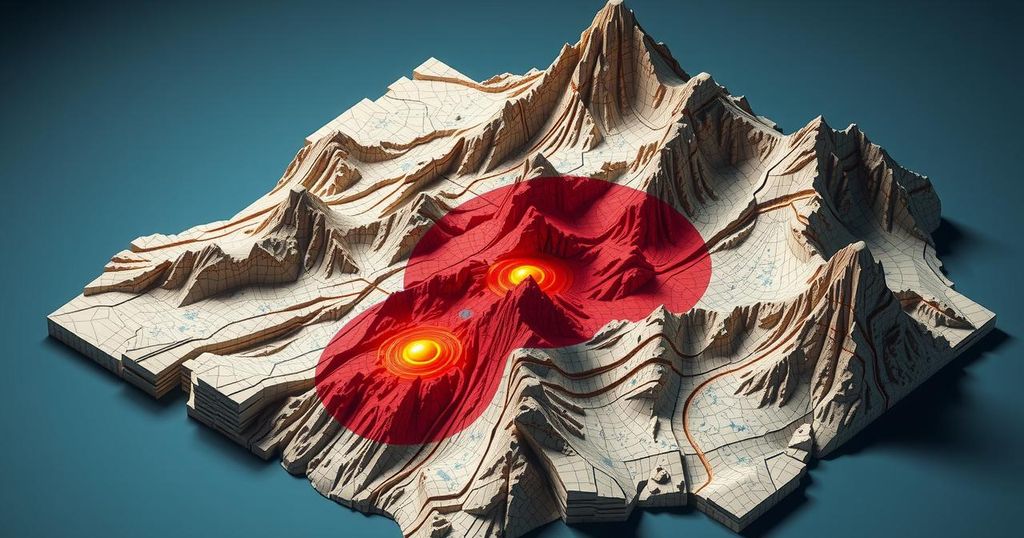World news
ARTIFICIAL INTELLIGENCE, ASIA, CHILE, CHINA, CHRISTOPHER JOHNSON, CLIMATE, DI, ENVIRONMENTAL IMPACT, HAWAII, JACKSON SCHOOL OF GEOSCIENCES, KI, LOS ALAMOS, LOS ALAMOS NATIONAL LABORATORY, MEXICO, NATURAL DISASTERS, NORTH AMERICA, SCIENCE, SERGEY FOMEL, SOUTH AMERICA, TECHNOLOGY, UNIVERSITY OF TEXAS AT AUSTIN
David O'Sullivan
0 Comments
Transforming Earthquake Prediction: The Role of AI in Enhancing Safety for 2025
Recent breakthroughs in artificial intelligence (AI) are transforming earthquake prediction capabilities, as exemplified by the University of Texas at Austin’s AI system, DiTing, which can predict 70% of earthquakes up to one week in advance. This system demonstrates the potential of AI to enhance global seismic monitoring and community preparedness, helping reduce the catastrophic impacts of these natural disasters.
For many years, earthquake prediction has been deemed a nearly insurmountable challenge, with scientists responding optimistically yet realistically to its difficulties. However, developments in artificial intelligence (AI) are reconstructing this narrative. Researchers at the University of Texas at Austin have pioneered an AI system, known as DiTing, that can predict 70% of earthquakes up to one week ahead, utilizing extensive seismic data from China. During a trial period, the algorithm successfully identified 14 earthquakes based on detailed analyses of seismic activities.
Sergey Fomel, a member of the research team, remarked, “Predicting earthquakes is the holy grail. We’re not yet close to making predictions for anywhere in the world, but what we achieved tells us that what we thought was an impossible problem is solvable in principle.” Meanwhile, at Los Alamos National Laboratory, researchers have harnessed machine learning to detect precursory signals of earthquakes, which were previously concealed by seismic noise. This breakthrough was achieved at the Kīlauea volcano in Hawaii, illustrating the potential of these techniques in understanding fault behaviors.
Christopher Johnson, a leading researcher at Los Alamos, stated, “We wanted to see if we could pull out signals from the noise and identify where the system was nearing a major slip in the loading cycle.” This method’s successful application to a substantial fault points toward promising advancements in earthquake monitoring. The implications of these AI technologies go beyond prediction. They provide real-time insights crucial for disaster preparedness, facilitating time for communities to implement protective measures in advance.
As models like DiTing mature, they offer remarkable potential to bolster global seismic monitoring systems. With improved accuracy from data supplied by the China Earthquake Observation Network, the effectiveness of seismic signal detection has reached unprecedented levels. The developments reflect both an astonishing achievement in technology and a vital step toward mitigating the human toll associated with earthquakes.
Much work remains, but the progress made by AI researchers marks a promising transition from a reactive response to earthquakes to a proactive approach aimed at resilience. The endeavors underway at the University of Texas at Austin, Los Alamos National Laboratory, and various seismic monitoring agencies highlight the transformative capacity of artificial intelligence. As these systems advance and data becomes increasingly available, the dream of dependable earthquake prediction progresses toward becoming an attainable reality, paving the way for a safer future.
The challenge of accurately predicting earthquakes has been a longstanding issue within the geoscience community. Traditional methods have been largely ineffective due to earthquakes’ unpredictable nature. Recent advancements in artificial intelligence (AI) have opened up new possibilities for forecasting seismic events by analyzing vast amounts of seismic data and identifying patterns that were previously undetectable. Researchers at notable institutions are now making strides in harnessing AI to transform earthquake prediction into a feasible endeavor, thereby enhancing community preparedness against such natural disasters.
In conclusion, the significant advancements in artificial intelligence are revolutionizing the field of earthquake prediction. With systems like DiTing proving capable of forecasting earthquakes based on extensive data analysis, the prospects for proactive disaster management have become increasingly plausible. As research continues at institutions dedicated to this field, the ongoing developments present humanity with a formidable opportunity to prepare for and potentially mitigate the effects of devastating seismic events. Through the integration of AI, a future marked by enhanced safety and resilience against earthquakes is brightening on the horizon.
Original Source: indiaai.gov.in




Post Comment